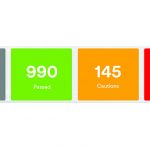For food processors, efficiency can be a major asset. Cutting production times and improving kitchen throughput is one of the best ways to reduce costs and boost profits. In recent years, new management strategies and a range of technologies—like Industry 4.0—has transformed how business owners manage their facilities, including food processing plants. This means there is a range of new, efficiency-improving tools available for businesses that want to streamline plant processes and better manage their operations. The strategies and investments are some of the best possible ways for food processors to improve their plant’s efficiency.
1. Take Advantage of Industry 4.0 Technology
Over the past few years, the digital transformation of industries has resulted in a wide range of products, platforms and devices that can help streamline facility operations and workflows.
Industrial Internet of Things (IIoT) sensors, for example, are Internet-connected sensors that collect a wide range of real-time data from site processes. This data can help food processors improve their bottom lines in a few different ways—like by providing better data on food safety or providing real-time quality control.
For example, IIoT sensors can be used to keep an eye on equipment performance and machine health. An air pressure sensor, installed at the right place in an HVAC duct, can provide valuable notice on blockages and damaged filters. When air pressure drops dramatically, it is typically a sign of some kind of blockage in the HVAC system. This advanced notice can help you fix the HVAC system quicker, potentially saving money and preventing dust or other contaminants from reducing facility air quality.
These IIoT systems also make it much easier to collect information about a facility. This information can help unlock insights about workflows, processes and site layouts, allowing changes that make a facility even more efficient.
For example, you may be able to gather hard data on how an individual product or product line influences machine timing—or how production of a particular item may slow down throughput or make workers less efficient. This information can help you adjust site processes, simplifying the workflow for products that put more strain on your facility, or cutting those products entirely in favor of simpler-to-produce items.
2. Use Efficient Equipment and Materials
Equipment choice can have a major impact on the overall efficiency of a facility. Even small choices—like the lightbulbs used or HVAC filters installed—can add up over time, reducing a facility’s energy bill and contributing to a more comfortable working environment.
Filter choice, for example, is especially important at plants that process a significant amount of wastewater or similar fluids. Good filtration is necessary to remove dangerous chemicals and contaminants from wastewater, but not all filter materials are made equal. Some perform much better than others—and this cost efficiency can have a major impact on a long enough timescale.
EPDM, for example, is an FDA-approved food-grade rubber and a common gasket material for equipment used in industrial kitchens and other food processing plants. It is also a common filter material. However, EPDM filters have a tendency to swell and suffer from performance issues over time. They may require more regular maintenance, which could negatively impact the productivity of a filtration system. PTFE membranes, in contrast, don’t have the same drawbacks.
Making simple adjustments—finding the right kind of filter or LED bulb— can help reduce maintenance costs and improve facility energy efficiency. Often, these changes can happen without major adjustments to the underlying equipment or workflows that keep the factory moving. These upgrades are a great place to start if you want to see how smaller tweaks and adjustments impact facility efficiency before moving on to more major changes.
3. Find Ways to Conserve Water
Similarly, food processing plants can save significantly by finding ways to reduce the amount of water they consume. Water is often seen as a free commodity in food processing plants—but consumption of water can become a significant expense at scale. Equipment, practices and machinery that help reduce water usage can be a way to cut down on costs while making the plant a little more eco-friendly.
Simple changes can make a notable difference without requiring new equipment. For example, some plants may be able to begin cleaning floors and equipment with sweeping or mopping rather than hoses. Mobile sweepers can cover large areas, like parking lots, that can’t be swept with manual labor alone. In one example, Bartter Industries, a New South Wales-based poultry product manufacturer, was able to reduce its water consumption by 10,000 liters a day (approximately 2,640 gallons) by switching from hosing to mopping and sweeping.
More extensive equipment and facility upgrades can yield more significant results.
Increasing the efficiency of water usage may also help future-proof a plant. Industrial water and sewage rates have risen significantly over the past two decades. Water insecurity and droughts may drive these prices higher in the near future.
Many major food production companies—including Pepsi-Cola and Coca-Cola—are already in the process of investing major amounts of money in water reuse and conservation technology.
Adopting similar technology and practices at your facility can provide a valuable competitive advantage now and help in the future when water reuse and stringent water conservation policies are more common.
4. Upgrade Your Maintenance Plan
Scheduled maintenance is one of the most commonly used maintenance approaches. Having such a plan in place can help reduce sudden, unexpected machine failure—helping avoid major downtime and reducing spending on replacement parts for facility machinery.
There are, however, major limitations to the scheduled maintenance model. Every time a machine is opened for maintenance, technicians may unintentionally expose sensitive electronics and internal components to dust, oil, fluids and other contaminants. Regular checks also won’t catch everything. If an issue arises and causes machine failure between scheduled checks, workers and supervisors will have no advanced notice of that machine’s failure, potentially leading to damage or injury.
New Industry 4.0 tech, however, means you can do even better than scheduled maintenance. Predictive maintenance is a maintenance approach that uses data collected from IIoT devices to improve maintenance checks and provide advanced notice on potential failure.
With this approach, IIoT sensors installed in and around machinery capture real-time data on how individual machines are behaving. If one begins to function unusually—exceeding safe temperature ranges, vibrating excessively or emitting strange sounds—the sensors can capture this behavior and alert a supervisor.
This maintenance method can help any facility cut down on maintenance checks and reduce the risk of sudden downtime due to damaged equipment.
Improve Food Processing Efficiency with These Strategies
Improvements to efficiency can be a major advantage for food processors. These strategies and investments are some of the best ways to improve a plant’s efficiency. Simple adjustments to materials, equipment, and workflows—or more serious investments in technology like predictive maintenance platforms—can make a significant difference in a facility’s productivity and resource usage.







